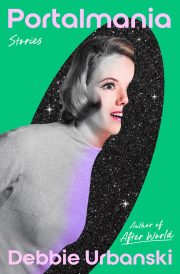Finding Focus in the Metaverse
By Nicole Valentine
Note: This blog post is not an endorsement by SFWA of the products discussed within it.
If you’re anything like me, the pandemic has cut into your ability to focus and write. It’s also changed the way we come together as a community. We’ve celebrated our Nebula Awards online twice now, and they were the most inspired I’ve felt in the last two years. In fact, it was the imaginative way we came together on Zoom that led me to delve deeper into what’s possible in the metaverse.
I invested in the Meta Quest 2 headset, though the following is no game review. I’ve been exploring virtual reality (VR) as a tool for creation and collaboration in the productivity section of the Quest app store. Two apps have become integral to my creative process.
I’m using one of them now. I am typing this aboard a space station that overlooks an awe-inspiring, slowly revolving Earth. The slow drone of the ship’s engine creates a comforting white background noise, and occasionally, another shipmate pops in and murmurs hello before getting lost in their own work. My computer is projected on a giant screen floating in front of me. There is no more real world. Gone is my kitchen table and two sleeping dogs. A full 360-degree turn of my head shows I’m completely in this world.
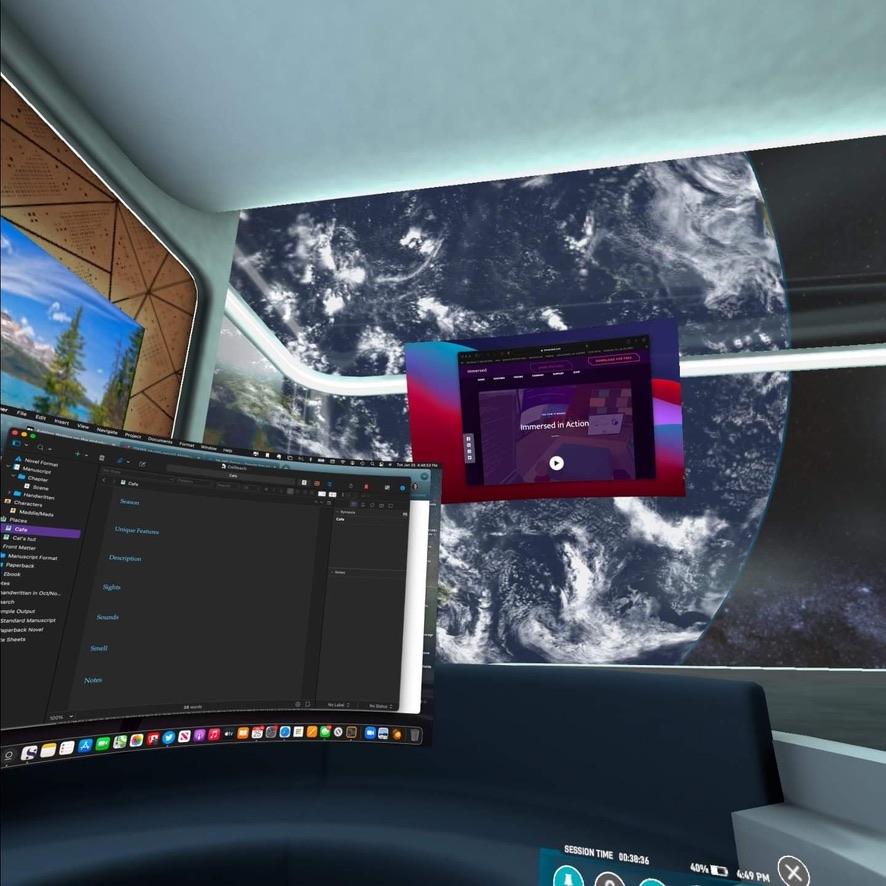
Immersed
That’s the name of the app and it’s appropriate. I came looking for focus and I found it. I’ve also found much more. I’ve found a community of people who missed working alone… together. With a flick of my fingers I move from a private mountainside chalet, to an underground cave with a subterranean waterfall, or to a public NYC-style café that quickly became one of my favorites. I love to hear the loop of jazz music and saucers rattling.
Here I am quietly working on my laptop in Scrivener, surrounded by other café patrons:
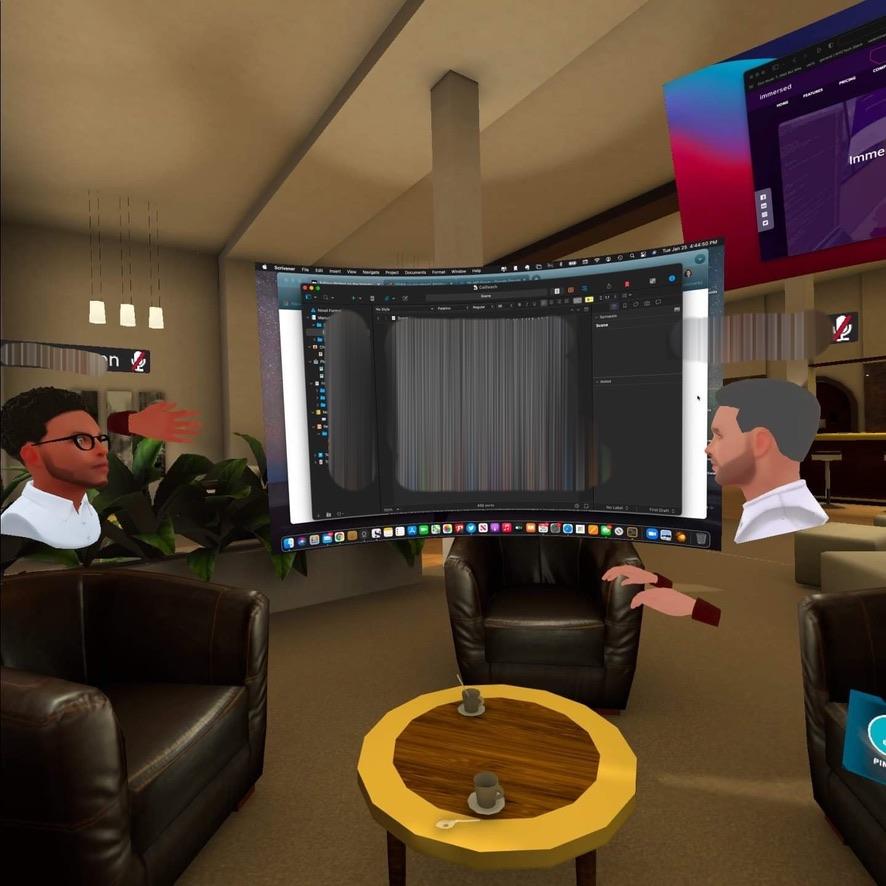
I have two monitors open and they aren’t visible to anyone but me. They can be resized and curved. Immersed allows you to spawn up to five monitors using MacOS, Windows, or Linux.
I was surprised at how much I like the public spaces in Immersed. Unlike other VR venues, I didn’t encounter any rudeness or unwanted attention. Everyone is here to work.
Immersed allowed me to create my own avatar or upload a photo and have one created for me. I chose the latter out of expediency and added my signature lipstick later. I like the avatars because they aren’t too cartoonish, but they still fall short of the uncanny valley:
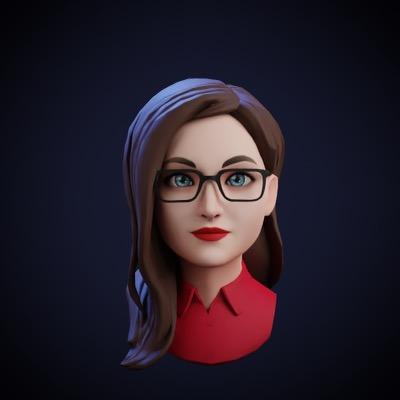
I’m also saving my neck. Instead of looking down at my tiny screen, I’m looking straight up at several large monitors. It’s doing wonders for my shoulder pain.
Immersed allows you to invite others into rooms for collaboration. I’m looking forward to the day I can run a writing workshop in here. The groups I run at the Highlights Foundation have been virtual in the pandemic, and I envision a time where writers can be spread throughout the globe but convene in one virtual room to discuss our works in progress. As the price of headsets declines, this future isn’t far off.
Their latest update offers passthrough windows. You can create windows into actual reality that you can set yourself: for your keyboard, your coffee cup, or even the doorway to your office. If you turn on complete passthrough mode, you will suddenly see your screen and your teammates’ avatars appear in your real-world living room! It’s very Star Trek.
NodaVR
Imagine how fast your brain can connect ideas when you’re standing inside your own mind map. In the NodaVR app, I mind map in 3D. Every idea is a shape at my fingertips. I can connect them, color code, and even import images and webpages. I don’t even have to type as the speech-to-text function works so smoothly. I can create a node, speak its label, and boom, it’s there! I’ve brainstormed before with physical index cards or with the software Scapple. This is somehow different. It’s allowing my brain to work as fast as I need it to without being held back by my fingers:
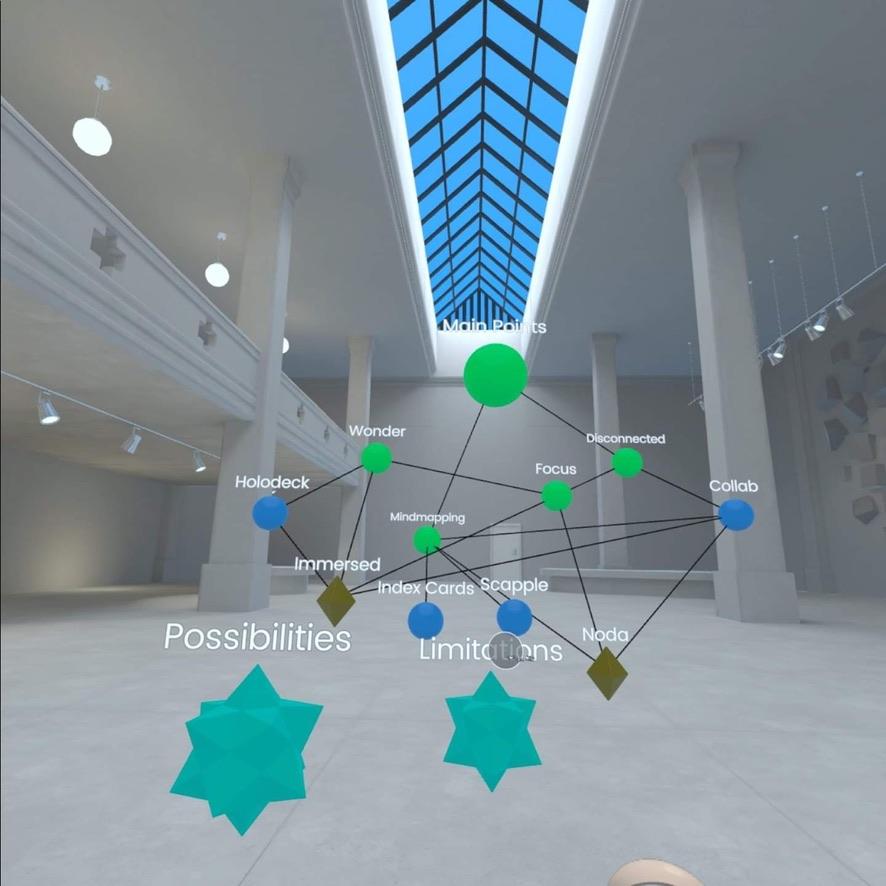
NodaVR has many different rooms to work in. They are so large you can let your mind run wild. It is perfect for creating maps or timelines. Like Immersed, NodaVR allows you to invite collaborators so you can brainstorm together.
Limitations
There are obvious limitations when wearing headsets: adjusting for the weight on your eyes, fitting the straps around your head, but you get used to it. Aftermarket purchases can also make it more comfortable—I ended up buying a new strap for the Quest2 that balanced the weight better.
As writers, curiosity drives us. Writers of sci-fi and fantasy need an even healthier dose of wonder. The worlds we create must tell the truth of our real world, while requiring us to fully step outside of it. Writing in VR returned that sense of excitement and wonder I so needed. Technology is rapidly evolving and the day where we can work together anywhere is here.
 Nicole Valentine (https://www.nicolevalentinebooks.com/) is the author of the middle grade, sci-fi novel, A Time Traveler’s Theory of Relativity. She earned her MFA in Writing for Children and Young Adults from the Vermont College of Fine Arts and teaches writing workshops at the Highlights Foundation in Honesdale, PA. As a former chief technology officer, Nicole loves science and enjoys pondering the times when science falls short of explanation and magic sneaks in. When not engaged in fictional worldbuilding, Nicole can often be found with a hawk on her arm or a needle and thread in hand.
Nicole Valentine (https://www.nicolevalentinebooks.com/) is the author of the middle grade, sci-fi novel, A Time Traveler’s Theory of Relativity. She earned her MFA in Writing for Children and Young Adults from the Vermont College of Fine Arts and teaches writing workshops at the Highlights Foundation in Honesdale, PA. As a former chief technology officer, Nicole loves science and enjoys pondering the times when science falls short of explanation and magic sneaks in. When not engaged in fictional worldbuilding, Nicole can often be found with a hawk on her arm or a needle and thread in hand.

